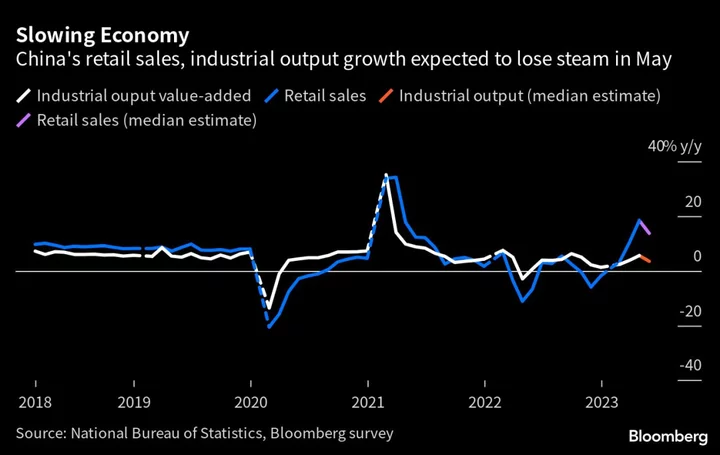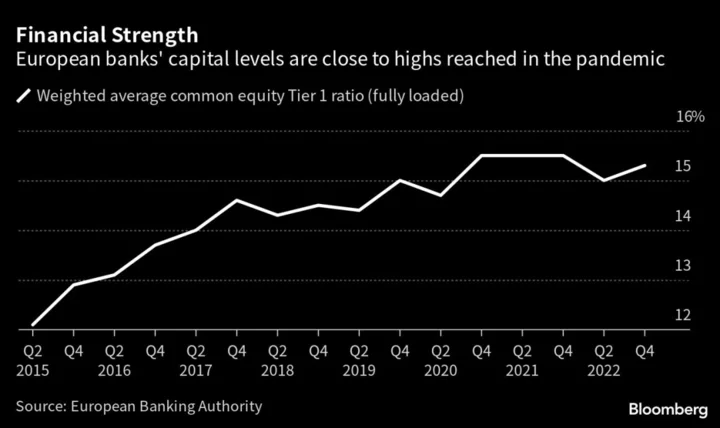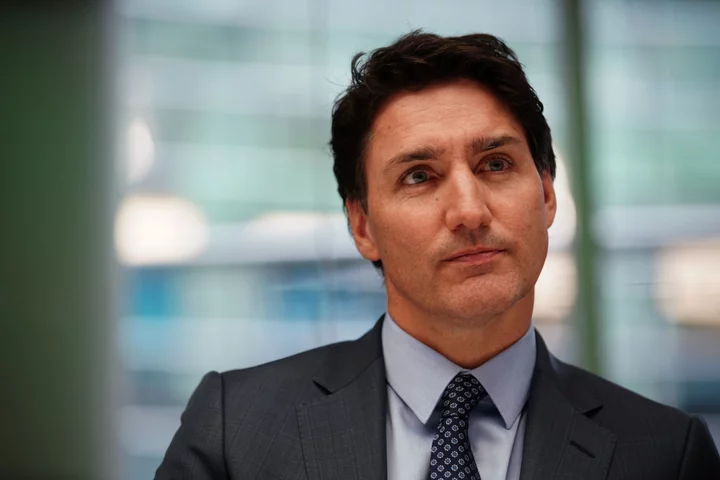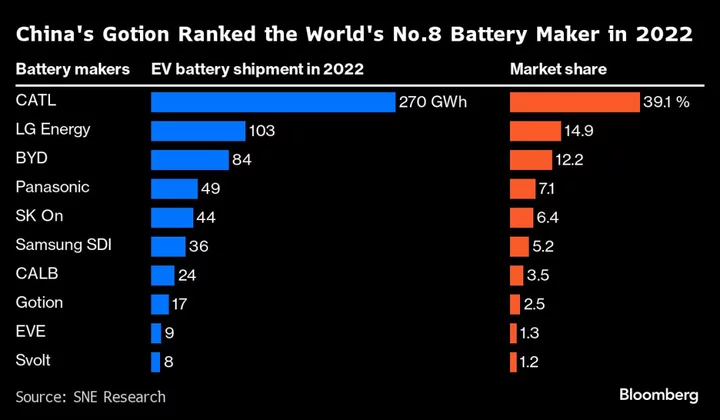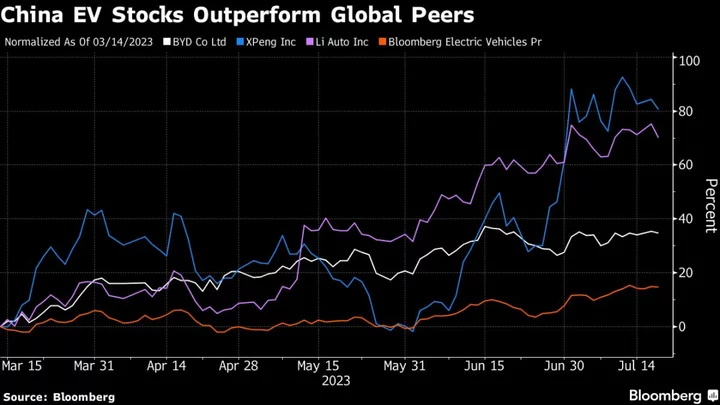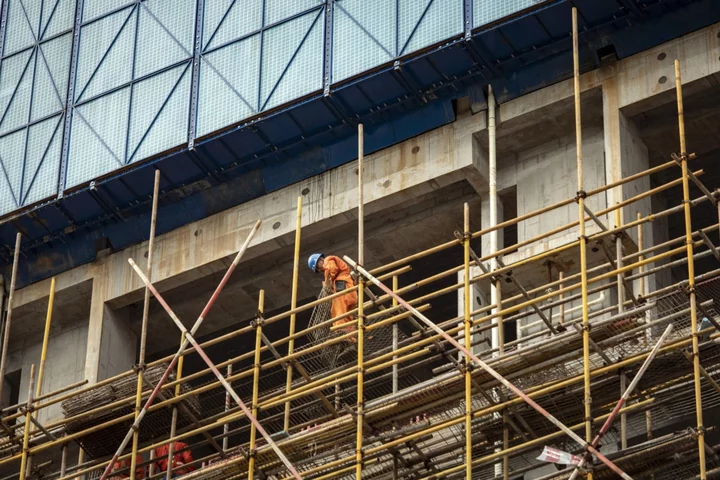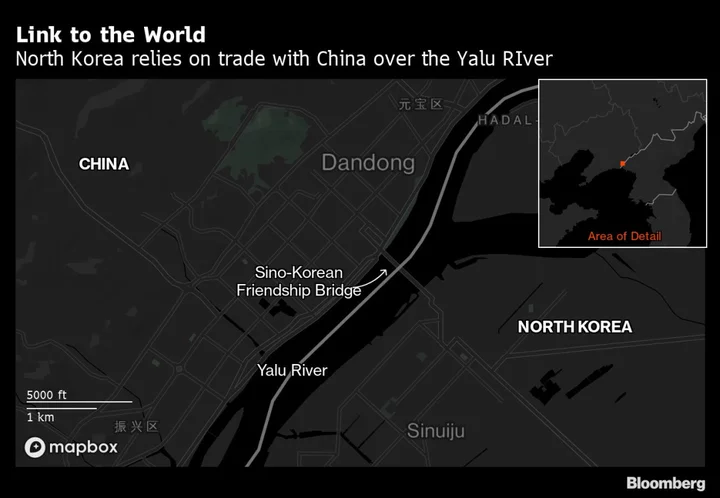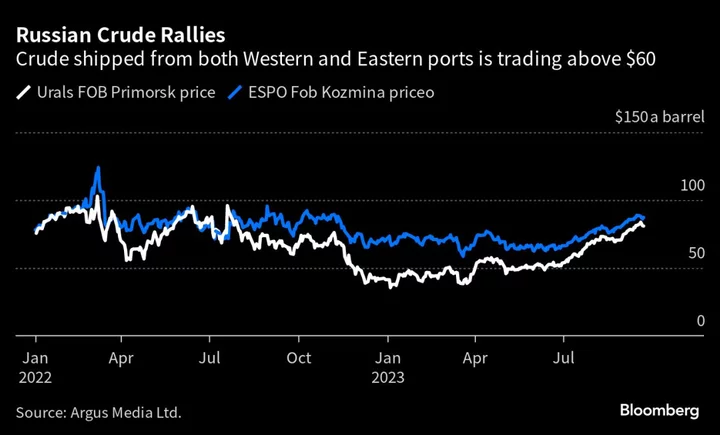China’s economy likely slowed further in May, as economists raise their expectations that the central bank will cut interest rates to shore up a recovery that’s losing steam.
Official data set to be released Thursday will probably show retail sales growth moderated last month from the post-reopening boom in the first quarter, while industrial production weakened as exports slumped and domestic demand eased. Fixed-asset investment also continued to struggle because of sluggish property and private investment, according to economists surveyed by Bloomberg.
Shortly before the figures are published, the central bank will have a chance to cut the rate on its one-year policy loans — a reduction that looks more likely after a surprise trim on Tuesday to its short-term policy rate.
Here’s what to expect from the data and rate decision:
Policy Rates
The People’s Bank of China may lower its medium-term lending facility rate — the rate on its one-year policy loans — following a surprise 10-basis point cut on Tuesday to its seven-day reverse repo rate. The rate on the standing lending facility, a short-term emergency policy loan, was also lowered late Tuesday. The three policy rates are usually adjusted around the same time.
The rate cuts suggest officials are growing increasingly concerned about the faltering economic recovery, and see a need for more stimulus. A decline in the PBOC’s MLF rate Thursday means banks will likely lower their loan prime rates next week.
Economists also expect the central bank will take other kinds of easing measuring in coming months, like reducing the amount of cash banks need to keep in reserve.
Any policy rate cuts right now may have limited impact on growth, though, since demand for loans from businesses and consumers remains subdued. Economists say more needs to be done to boost still-weak confidence among companies and households to invest.
Chinese authorities are already considering a broad package of at least a dozen measures designed to support areas such as real estate and domestic demand, according to people familiar with the matter. The State Council may discuss the policies as soon as this Friday but it’s unclear when they will be announced or implemented, the people said.
Retail Sales
Retail sales are forecast to have expanded 13.7% in May from a year prior, a relatively strong pace but less than April’s 18.4% pickup, according to the median estimate in the Bloomberg survey.
The figures are partly distorted by the base of comparison with 2022, when cities including Shanghai were in lockdown. The restrictions began to ease toward the end of May last year.
There are signs the consumer-driven rebound is cooling off. Car sales expanded 29% in May from a year earlier, according to the China Passenger Car Association — a weaker pace than April’s 56% year-on-year growth. Car sales are slowing after a blockbuster 2022, prompting officials to launch a six-month campaign to boost purchases.
Road traffic is also slowing a bit, a further sign of weakening activity. Traffic in 15 major cities was 118% of the level recorded in January 2021, down from April’s 130%, according to calculations by BloombergNEF based on Baidu Inc. data.
Economists also say weak income growth, record-high youth unemployment and pessimism about the outlook for the economy and the housing market are all weighing on households, which have chosen to repay their debts early to reduce their risks.
Industrial Production
Industrial production is projected to have grown 3.5% year-on-year, moderating from a 5.6% increase in April. Softer domestic and external demand — as indicated by the first drop in exports last month since February — likely weighed on the data.
The industrial sector has lagged behind the pace of the recovery in services this year as the economy rebounds from the pandemic.
Demand has already been weakening in the steel industry, which supports construction as well as machinery and car production. In a manufacturing survey measuring activity in the steel industry, one subindex gauging output plunged in May to 27.5 from 47.2 in April. The 50 mark separates expansion from contraction.
Fixed-Asset Investment
Investment activity likely eased, too: Fixed-asset investment in the first five months of 2023 is expected to have grown 4.4%, down from a 4.7% increase in the January-to-April period.
Weak corporate confidence and plunging profits at private industrial firms have weighed on private investment, which stagnated in the first four months of the year.
Construction activities expanded at a slower rate in May than April, according to China’s official manufacturing purchasing managers’ index. That’s a sign that property investment likely continued to suffer.
Economists forecast real estate investment to have contracted 6.7% in the first five months of the year, worse than the 6.2% drop recorded in the first four months.

